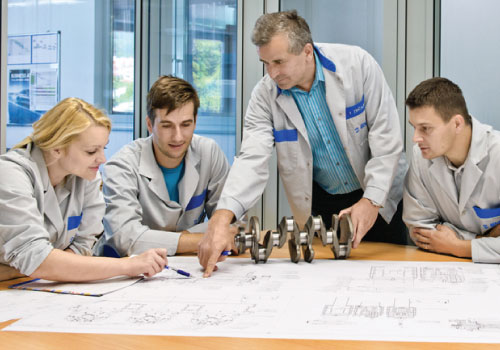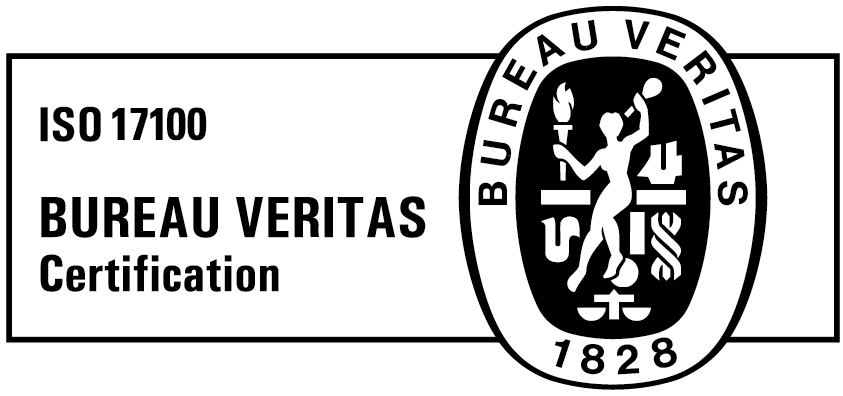Podcast
How Taia is successfully riding the wave of translation demand
Over 7 short episodes, Matija and Umat discuss why Taia is different from traditional translation agencies, and talk through the company’s beginnings as well as its secret to successfully riding the wave of translation demand.
Playlist
7 Videos
“ But again, a lot of students will need to learn new technology before they even finish college because their entire occupation might change from the time they enroll into the university to the time they finish four or five, or however many years later. They probably will need to learn entirely new concepts that weren’t even there. “
Matija Kovač, Co-founder @Taia

Matija Kovač
Co-founder / Head of Development @Taia
Matija Kovač is the co-founder and head of development at Taia Translations, a company breaking down language barriers with the help of Artificial Intelligence, translation memories, and a team of highly experienced translators.

Umat Ozaydin
Founder @Dragoman
Umat Ozaydin is the founder of Dragoman, a language service provider that combines Artificial intelligence with human translators to provide video captioning, interpreting, localization, and translation for global brands.
What you'll learn
- Taia’s story, and how it compares to that of traditional translation agencies.
- What Matija has learned as an owner of a successful translation company, and what his best tips are for you.
- What Machine translation involves and how it can help you speed up your translation processes.
- How translators must adapt to the influx of technology used in the translation industry and use it to their advantage
- Matija’s best tips for young language graduates on how to adapt to these changes, and what skills to acquire to stay relevant and successful in this field.
- How technology can help to create a broader range of translation services for very specific demands.
- How to estimate your translation costs and timelines using Taia’s instant quotation tool.
Transcript
Episode 1: How to manage hypergrowth?
Intro:
Hi everyone! This is the Dragoman Transcreation Podcast. We share tips on languages, translation, editing, interpreting, subtitling and localization. In this episode, our host, Umit Ozaydin, welcomes co-founder of Taia Translation services, Matija Kovač. So let’s start.
Umit Ozaydin:
Hi Matija, how are you this afternoon?
Matija Kovač:
Hi, thanks for having me.
Umit Ozaydin:
Well, thanks for agreeing to take the call. You guys over there in Slovenia, you’re doing some fantastic things, and I wanted to learn more about how you run the business. And I’m really curious, you know, who is Matija Kovač? Is it Kovač? How do you pronounce it?
Matija Kovač:
Yeah, yeah. That’s right. You’re good with reading the letters. So I come from Slovenia. That’s why I have a funny sounding name to anyone who is not European and not used to reading our letters. So if you don’t know, Slovenia is a very tiny place underneath the Alps. There’s just about 2 million of us, and we speak a language that no one else understands normally. So this is why a lot of us are keen on learning languages, then going into the translation industry or language learning industry and so on. So yeah, this is also where I ended up. I studied Chinese in university. Also geography, but that’s another story because I have two degrees. I’m a parent of two beautiful little girls. I have a loving wife. I have two companies, so it’s a joke that with each child, I have another company because they’re the same age. And yeah, that’s about it. I like music. In my free time, I play guitar or drums or anything, as long as it’s… [Unintelligible]
Umit Ozaydin:
Oh great, the drums as well?
Matija Kovač:
Yeah, I just started learning drums. It’s amazing. It goes to your brain. It’s a good exercise for your brain, but I’m more of a – not a translator as much as I’m a nerd. I like computers. I like programming. I like to geek out on very deep topics, so when it comes to artificial intelligence or anything similar. So yeah, this is where you’ll find me.
Umit Ozaydin:
As a startup, how do you manage the hypergrowth? You know, because investment comes and your name gets out there, the clients…how do you guys manage that?
Matija Kovač:
Well first of all, yeah we started out from Slovenia, but we’re not anymore only a Slovenian company. We have our HQ based in London now. We have more and more people working for us from the UK, as well as now lately from Cyprus and Spain. So we’re becoming quite a multinational company these days, not in a bad way.
Umit Ozaydin:
Yeah, it sounds fine.
Matija Kovač:
Yeah, and the growth has been really fast, so it’s sometimes difficult to keep up with the number of new clients coming in, the number of new colleagues, even, coming in because we’ve grown tremendously in the last few months or in the last year, even. So it’s one of the issues that every startup company that is at least a little bit successful will face. It’s the so-called hypergrowth problem or the problem where you try to onboard too many clients compared to what you’re actually capable of handling, for example, or even if you’re a software company, that your technology is capable of handling. So this is something that’s common with startups and it’s as much of a problem as undergrowth is. So even if you grow too slow and you don’t bring in the revenue you were supposed to and you’re burning through your runway too fast, that might be an issue. But on the other hand, again, if you’re growing too fast, acquiring too many clients that you’re not capable of serving properly, their user experience will be quite bad. And this means that you have a lot of churn and a lot of marketing, and sales money is being spent for acquiring clients that you are not capable of keeping in the long-term. So this always has to be in a good balance and I think it comes even more to an importance with localization since a lot of our work is not only machine translation, but a lot of times you do still need human translators from all parts of the planet to get your services done. And if you have a giant client coming in and demanding millions of words translated and you just don’t have enough translators on board to be able to serve such needs, it’s again an issue. So I think for localization companies, it might get even more stressful sometimes, but so far we’re coping just fine.
Umit Ozaydin:
Yeah, you look like – I mean your name is out there and I hear your reputation is also growing, and I wish you the best of success.
Episode 2: How Taia works
Umit Ozaydin:
What makes Taia unique? You know, I see other cloud-based offerings on the market, you know, there are different machine translation solutions in different interfaces, marketplaces – but what is your unique positioning?
Matija Kovač:
Well, I think it’s how we position ourselves, who we think our product is most appropriate for. So for example, you have these traditional software providers in the localization industry that produce, I’d say, decent software, but it’s very complex for users who are not into the localization industry. And, on the other hand, you have all these old school agencies who still work the traditional way via sending emails up and down and having everything run more or less manually. And we try to position ourselves somewhere in the sweet spot between having clients that are not very tech savvy when it comes to localization or translation, but again, offering them a very modern and powerful cloud-powered solution that allows them to easily manage all their translation needs. So instead of them having to buy dedicated server licenses and special software and onboarding and training and all of that that comes with traditional localization software, we provide them with a very easy-to-use user interface that allows them just to drag and drop their files and have everything translated very easily so they don’t have to deal with workflows and whatnot.
Umit Ozaydin:
Oh, that’s good to know. I’m just curious, do you have, just on the top of your head, any numbers about how much of the client services are ‘do it yourself’, like clients exactly as you described. They go and drop their files and do their own job, as opposed to, you know, still keep sending the emails or sending a Wetransfer link, you know. Do you have any percentages on that?
Matija Kovač:
It would be a wild guess. I would say we definitely improved this percentage towards more people using the app and less users sending us emails like they did back in the day. We managed to get most of our old users, users who worked with us in the past, onboarded to the platform and they really like it, they enjoy using it. But, you know, there are still people who like to stick to the old ways, sending us emails. But this is something that we said, okay, I guess we’re going to have to charge them a project management surcharge on this because there’s someone that has to do their job. So we need the project manager to download the files and put them into the app and generate the quotes and send these quotes back to the client via email. This all takes time and this time costs money, and we don’t want our clients to be paying the overhead of our project managers. We want them to be able to have control over their projects, but have it in a simple way so they don’t need to onboard a giant, huge complex system as they had to back in the day. So this is, I think, the main difference here and so far it’s working fine, but there’s still so much more we need to do when it comes to user experience. So we’re planning now some very thorough changes of our UI, and I think these are going to really help onboarding more people and getting them more comfortable with using our platform.
Umit Ozaydin:
Okay, that that’s good to know. Judging by the way you present Taia, I think it wouldn’t be a wild guess to say that you’re more like servicing to the end clients, to the corporations or SMEs. Would that be a right statement?
Matija Kovač:
Yes, exactly. So we don’t normally work with translation agencies or freelancers, and we don’t normally work with the giant multinationals because they already have some very complex systems in place, and it’s slightly harder for them to integrate with us or to leave behind what they already have in place. But that said, we work a lot with companies who have localization needs, who need to translate or proofread or transcribe or subtitle, or whatever they need to do with some of their content. And we allow them to do this in a simple way, in a simple user interface. And I think, yeah, this is where we position ourselves mostly. I mean, the more we grow as a company, the more we work with bigger and bigger companies, and of course they like to utilize our API integrations or custom machine translation solutions, or they just plug and play one of the workflow parts that we allow them, while some also decide to migrate entirely to our platform. But, again, it’s something that takes a process. You need to first develop a sort of understanding with your clients and build some sort of a relationship. And then through this small project, you go into a bigger partnership where you can onboard them into the entire system.
Umit Ozaydin:
Well, sure. I mean, it takes time and a lot of pain and maybe joy, you know, ups and downs. I can imagine…
Matija Kovač:
Just like every business.
Umit Ozaydin:
Just like every business.
Episode 3: Secret of a Successful Translation Agency
Umit Ozaydin:
Okay. Let me ask you a more niche question then. You know, since you put so much emphasis on the simplicity, UI. How would you say – or what do you think is the secret to become the top choice of a corporate communications manager, for example.
Matija Kovač:
Right. So I think, since I’ve been on the other side of this table, I know how it looks like from the client’s perspective, when you’re trying to order something, when all you need is just to get it done. And you don’t really care who’s going to do it, or how are they going to do it. As long as the quality is right, the timing is as agreed, and the price is as it was negotiated or agreed upon in the first place, you’re happy with someone else doing it. And this is why, back in the day, agencies were so popular – even now, I mean, the localization market is extremely fragmented. There’s millions of agencies, each of them tending to their small garden, just because clients like to have someone, you know, taking care of their projects. But that said, we are in the era where we all try to rationalize our costs and the time wasted on some projects, and this is where our solution comes in because it allows clients to have the control, but not the hassle of getting stuff done. And this is how it’s – you know, it allows them to get things done without wasting so much time and energy. Imagine, for example, a traditional scenario. You would send your file to a translation agency asking them for a quote. It would take them up to 24 hours in some cases or even longer for the agency to send the quote back and maybe ask you some questions about when do you need this file or what kind of quality do you expect, or where do you believe this file will be published? Have you got any reference files, maybe translation memories? You know, this all takes a lot of energy on your end. You need to take your time, reply to this email, take a look at the quote that you received and then say, oh, maybe the quality that we demanded is too expensive, should we reduce this, or the time that they suggested doesn’t work for us, it’s too far along in the future, can we maybe reduce the time a little bit? And this all takes a lot of your time and energy, as a procurement manager or communications manager or whatever you are, when you are ordering translation services. And then this isn’t – you haven’t even started translating yet, and you’ve already wasted a bunch of time sending emails and your files are being sent up and down, across the agency and manually handled. Whereas in our case, you drop the files, you get the quote back in 30 seconds, you decide what service you like, you decide what delivery time works best for you, you see what the final prices will be, and you’re good to go. You just submit the order and in about an hour, someone of our translators will already be working on it. You can see the progress live, you can see how the file is getting done, and you can see every update that happens in a few hours, or maybe a day or two, depends on the size of your file. You’ll get a notification with your file already done, and there’s no need for sending files back and getting the invoices through and all of that. It’s a part of the process. It’s all inside this same platform. So I think this is our bet on how we can get these people to be more inclined to work with us.
Umit Ozaydin:
Say I’m a corporate communications manager and I see the progress of the files – is there a chance that I can also, you know, maybe chat with the localization team and maybe suggest a few terminology or interfere and say, “oh no, that’s not the way we want to translate it. This is the wording we use”. Do we have that kind of visibility or access?
Matija Kovač:
In some cases, yes. So one thing that we are very keen on is always building translation memories. So if we’ve translated something in the past for your company, you can bet that we will be translating it the same way from here on. And we also built glossaries specifically with clients, like when you said marketing or communications, this is very important. So we would probably scrap your content automatically for some phrases that are very common and we would suggest translations in advance. And you would confirm these translations before we even start with the first project, if we decide to go in such a long-term business, and this is only one of the parts. Then of course, once you create a new project, you can always leave some comments or reference files and let us know if there’s anything we have to be very specific about like brand names and locations and whatever. And then once our translators are done, you would be able to review the files directly in our platform, so you can actually recommend comments or supply us with some changes that would then be also recorded back to the translator automatically and they can go in to fix them. Or if there’s a proofreader involved or an editor, they would be the ones doing the changes. So this is something that – we’re quite keen on getting clients interested in using our platform and contributing feedback while we work together. It’s a very two-way process when you’re working on complex projects. it’s nothing that you can, you know, send the way we’ll do it and then you’ll get it back and you have to be quiet about it. We have to work together to get the best results.
Umit Ozaydin:
Yeah. It’s, I think, you know, co-working or collaboration is the right word to define this process.
Matija Kovač:
Exactly, yeah. But having a cloud platform allows you to do this seamlessly in real time. I’m afraid we’re going to have to get some more development done before we will be able to allow for even better user engagement during the translation or chatting with the localization team as you recommended. It is something that’s on our bucket list so to say, but it’s not something that we’re comfortable building just yet, since we have so much more things we need to do before that. So our development list is, I think, endless.
Umit Ozaydin:
No, I mean it never ends. I mean it’s a constant evolution of the client requirements as well, but I’m sure you have a core requirements list that you focus on. So…
Matija Kovač:
Something like that, yeah. Episode 4: Art of Machine Translation
Umit Ozaydin:
We have talked so much about this automation, cloud, but I see on your website that you have a machine translation focus and this focus – I’m sure you have built an expertise in-house. So what is your take on machine translation? Is it just about, you know, having a nice customized engine and then finding, you know, some very careful and diligent post-editors or reviewers or…What is, if I may say so, what is the science, or what is the art of the machine translation, to do it right, to meet the client’s expectations?
Matija Kovač:
So I think to understand this topic a bit better, we’d have to rewind time just a few years back. Now, maybe some of your listeners are not familiar with this or they are, I don’t know, but let’s assume that we’re talking to a crowd of people who’ve never heard a lot about machine translation. They know Google Translate exists or something similar, right? And, if you remember back in the day, everyone was laughing about Google Translate and the quality that these statistical machine translation engines produced, and it was more or less a joke for a long time. And slowly it improved in quality, but until very, very recently, I think it was just about 2016 – it’s when the industry finally changed its technology from statistical-based engines and rule-based engines all the way into neural machine translation. And it was then at this point in time that I realized – Marko, my co-founder as well – that there’s this giant wave of automation in the localization industry that’s coming and it’s coming as a tsunami, you might say. And as a company that was already, you know, getting into the localization industry, but we weren’t well-established yet back then, we were still a small company – it was more of a side business for us because we had another project going on at that time – and we realized that either we go all the way in and we embrace this technology and become masters of it and be able to serve this tsunami, or we will be just like any other traditional localization provider that’s probably going to get swept under this huge wave of automation. And that said, Taia has always been built around the concept of AI assistance for translations. This is where even the name comes from, as it’s sort of an acronym for that. And we tried to build our entire business model around leveraging on this new technology to help us deliver professional translations much faster and much more efficiently. And back in 2016, when we first started developing this concept for this brand, this was a brand new premise. Not many companies were working with post-machine translation editing because machine translation just wasn’t that good unless you had a very specific use case. And now we’re coming into the era where machine translation will be able to cover more and more needs of human engagement, of human contact. And what it does is, you can already see huge companies, E-commerce platforms specifically, who serve millions of users with content that is exclusively machine translated. This is something that even six years ago would have been inconceivable because the quality of machine translation was just so bad. So where we are now at this stage is, there’s not only Google translate or any of these general machine translations. There’s this huge opportunity out there for clients who have a proper data set to build custom machine translation solutions just for them, and they can work much better than anything that’s already available on the market. And this is something that’s really exciting for us because as we work more with the clients and we build their data sets and we build their translation memories, we can also use this data to train engines and help them perform better so that the price reduction and time necessary to get something done will be reduced even further. So, I’m really looking forward to when we get even more and more of these projects and get more involved into this area. Episode 5: How can we serve the Tsunami
Umit Ozaydin:
Yes, having said that, yeah, it’s a giant tsunami. This wave has arrived or maybe it is already sweeping some of the translation agencies and maybe some translators who were otherwise excellent in their art, in their craft, but then they just could not adapt. And these are exciting times and maybe also risky times for most of us, and I guess we are all trying to adapt, aren’t we? So talking about adaptation…well you know, I used to be an academic in several universities and tomorrow I am having a webinar with a group of translation students. So I would really love to get your advice for these students or the fresh graduates. How can they serve this tsunami? You know, everything is changing and maybe they don’t really study this in school, how to serve the tsunami.
Matija Kovač:
It’s just a very long and complex topic, but let’s try to put some light onto this problem. So imagine, rewind time back 10,000 years when the first human technology appeared and we became…
Umit Ozaydin:
10,000 years. Alright.
Matija Kovač:
10,000 years, let’s start at the beginning of human civilization, right. If you imagine that none of the technology involved in producing food would have ever changed, there would still only be about 2 million people on the entire planet. Or maybe a million up and down or something like that. But what I’m trying to say here is that technological development is inevitable. And through this development, normally human society will change, and a lot of the automation that we’ve seen ever since the Neolithic until the industrial age, and of course in the last 150 years or so, a lot of it has led to very fast and very, very deep changes in the way we work, the way we live and all of that. And what I’m trying to say here is that it’s inevitable even in our lifetimes and even faster than that, that we have to change the way we do things. Sometimes it’s a matter of years, sometimes even less. And one of the things, you know, as someone who is involved in technology a lot and to computers and all that, I see this on a daily basis and it’s hard for me to keep up – even though I’m a huge computer nerd – to keep up with all the changes in the technology. I imagine it’s much harder for someone who’s not that much into the technology and is more into languages because of the art of translating languages. As you said, it’s still an art, it’s still usually something that you will learn in a humanistic college or faculty. And it’s one of the few things in these humanistic faculties that is changing so rapidly because of the technology. I mean, geology didn’t change much or philosophy hasn’t changed much because of the technology. You know, psychology maybe has a little bit, but again, languages are much more at need to change because of all the technological changes that are out there. So what I would say to new translation experts that are coming out of college these days is you shouldn’t be afraid of this technology or you shouldn’t be like one of those people like luddites back in the industrial age that were setting machines on fire because they lost their jobs. That doesn’t help the problem. You have to become part of the movement in order to be able to survive, and translation at its core – in some parts is going to change dramatically. So stuff that’s very repetitive and easy to translate or easy for machines to assist with translating – this stuff is going to change. So why would you waste your time translating the same contracts every day if a machine can help you do it much faster and you can live a much more meaningful life. You don’t have to spend so much time doing repetitive stuff, you can work on more projects and then have more free time available or, you know, make use of the technology. But again, I do believe that with this birth of all of this technology, the demand for translations will also increase because the translation services will become so much more available to the entire community. This means that so much more content will be available to translate, that translators will not lose their jobs. Their jobs will change, yes. And in some cases, even that won’t. Like content, like let’s say marketing content, let’s say advertising copy or, you know, literature and things that are very, very specific about how they are translated and are not just contracts or technical manuals or day-to-day stuff that needs to be translated, but someone wants to translate it – that is still going to be done the good old fashioned way as it was done 10,000 years ago by a human. You know, it brings us full circle. There’s a lot that automation can do, but then still some things just have to be done by hand and it will remain so for a long time, I see. Again you’re muted. I hope I’m making any sense. I keep coming with extremely long sentences.
Umit Ozaydin:
No, you sound philosophical.
Matija Kovač:
I am. Well, it’s a philosophical question, isn’t it?
Umit Ozaydin:
Yeah. But you know, a little pragmatism or some concrete examples would help, you know.
Matija Kovač:
Yeah, sure. We can go back and try and get this angle in as well, if you’d like.
Umit Ozaydin:
No, no, I enjoyed it, right, so let me further this with a joke. We will cut this part, but no, you are who you are. I mean, let’s be natural. I mean, let’s not be a robot. I hate those doctors… [Unintelligible]
Matija Kovač:
What can you say to translators? You picked the wrong job? I mean, your job will not exist by the time you’ve finished college? I mean, it’s almost true that a lot of them will just not be working in this industry. It’s just…
Umit Ozaydin:
Yeah but maybe now they need different skills, like they need on-screen skills. I mean, it wasn’t like that because in the past, the translator was, you know, perceiving or conceiving everything mentally as an abstract form, and then would be typing it on the keyboard, or 10,000 years ago on a tablet, on a clay tablet. But I mean, with the AI, translators are receiving something preconceived. So I think it’s a different – the eye, brain, the hands, they need some other mental and cognitive skills, and that is not being taught in school, I think. So what is still being – you know, the students learn how to translate something from scratch on their own. Whereas now they are presented with something to review. So I guess reviewing skills or revising skills are different. Maybe there are some overlapping skills. Episode 6: A new era for Translators
Umit Ozaydin:
So from this regard, you know, changing the way translators work and they shouldn’t be afraid…What practices do you recommend to the translators in this new era?
Matija Kovač:
Well, it’s…a translator – I read this somewhere once, I think one of our translators shared it in our chat – a translator is a reader, an interpreter, and a creator at the same time, when they read content and they consume it and they make it in a new language. And in some cases, it’s a very creative job. You have to come up with very clever ideas and keep your mind involved, and in the past it was even more so. You had to come up with everything. Now you get the assistance of the AI, or you get the assistance of the translation memory. And a lot of times, it has been debated that all of these inputs from different technological ideas will stream your mind into a different point of view that you might not even think of and the way that your brain would conceive it might’ve come even with a better approach, or a lot of times it’s a much better approach. So because you are shown, let’s say one or the two or three different possibilities in whatever tool you’re using that you’re helping yourself to translate with, you don’t see the idea that your mind would have conceived on its own. And this is something that is sometimes an issue when it comes to translating, especially very creative content. So as much as technology can be very helpful in some specific cases, specifically let’s say literature or marketing content or anything that needs a creative human input might suffer from all of these technological inputs. So I think this is where the beauty of the translation profession, of people who dedicate their time and energy to study this for a few years and then develop their skills and then go out into the market and provide this, is still there. It’s always going to be there. But again, a lot of students will need to learn new technology before they even finish college because their entire occupation might change from the time they enroll into the university to the time they finish four or five, or however many years later. They probably will need to learn entire new concepts that weren’t even there. If you take a look at the time right now, we just discussed, you know, five years ago, neural machine translation wasn’t even an option because it didn’t exist yet.
Umit Ozaydin:
Well yeah, I mean, I understand where you’re coming from. Will that make a translator more like a reviewer or a revisor, or maybe a terminology manager? Are there kind of role-related changes as well in this career path?
Matija Kovač:
Yeah, I think, yes. I mean, with the technology making translations easier for humans, it’s easier to translate something than it was ever before with all the assistance that you get now. Not only will the roles of translators already out there change from being more creators, to being more revisers and making sure that the machine didn’t make a mistake. But also, more people will be able to translate than ever before. So on the one hand, this allows for a much bigger diversity of translation services. So for example, we can now offer something that’s, you know, post-machine translation editing plus additional editing and plus proofreading – sorry, translating and editing and proofreading with like a traditional TEP service, everything that’s, you know, part of the process that we used to talk about. And of course this is a beautiful service for when you need it, but sometimes you don’t need that kind of service. You don’t need three humans to make sure that some documentation is perfectly translated if you already know that this documentation is just there for its own purposes. For example, we had a client a few months ago who had an inspection coming into their company, and this inspection decided that, oh yeah, you are a foreign company, but some of your contents like documentation for some specific certificates that probably no one will ever read has to be localized. And they couldn’t afford a TEP service for that because it wasn’t something in their budgets. It would cost them, I think, about a 100k euro or something like that for the amount that they had, it was a bunch of content. And they knew that no one is ever going to read it except the inspector who comes in and says, “okay, you have this translated, it’s done, let’s move on”. So what they decided to go with is something that we call machine translation with light review, which means that if, suppose that the machine translation is of sufficient quality – I’m not saying, you know, we would do this for any type of machine translation, it has to be some proper quality first – a translator would just come in and remove the biggest mistakes in the text, just, you know, go through, make sure it works, even though it doesn’t sound perfect or it doesn’t run smoothly, it’s not how a native speaker would probably say it if they were to write it down from scratch. But it’s there, it’s translated. It allows someone to understand what it means, but it’s not perfect by no standards, you know? But this just allows, you know, with all of these different creative uses of this technology to provide different levels of services, wherever they might be applicable. There are cases, of course, when this isn’t possible. For example, imagine you have a legal document that you need translated – let’s say you have, I don’t know, a merger with another company, right? You wouldn’t want to trust that to machine translation, right? Not now, not in 50 years, I assume. You would want to have someone to go through that, not once, but twice or three times and make sure that this content is perfectly translated and that there’s no mistakes left in there. And this is the difference in what’s actually the demand, the market. And to go back to the topic that I just briefly mentioned before, yes, this technology allows so many more people to be able to translate. So when it comes to simple content, content that just needs to get, you know, from one language to another, and someone just needs to be able to understand it, now it’s easier than ever before for someone to go in there and make a machine translation and just check if they’re bilingual, is this machine translation correct? Yes, it is. Does it sound perfect? No. Does it have to? No. So it’s good enough for whatever the client needs it for. And who are we as translators or translation companies or service providers to decide what the client actually needs? You know, it’s still their choice. Let’s keep it an open market as it’s supposed to be, right? Episode 7: Do we need a Ferrari?
Umit Ozaydin:
It was years ago, I think at a European conference, we were discussing, and it was about quality. And then as the panel, we agreed on one simple fact about quality, and that is, quality is not an absolute. I mean, people have different quality levels. And this goes for cars, for textiles, for furniture and for translation as well. So it’s not absolute and no one has the right to dictate it, except I guess, from the client themselves because the clients… they own the content and if they want it that way, that way it is.
Matija Kovač:
Yeah. Sometimes you need a Ferrari, sometimes you just need a bicycle. As long as it gets you from A to B, then you are the one who decides how you want to get from A to B.
Umit Ozaydin:
Yeah. But do you, or your project managers or sales people find themselves in a position where you have the urge to convince the client that they need a Ferrari and not, you know, a simple Fiat. Do you feel that urge or the need at any point?
Matija Kovač:
I mean, yes. You would run into clients that are very picky about the costs and they keep insisting that they need a lower cost, but they don’t want to give up on any of the quality of the translation. And this is something that is sometimes hard to explain to clients, that if you want a Ferrari, you’re going to have to pay for a Ferrari. You can’t expect to get a Ferrari and pay for a Fiat or whatever. I don’t want to put any names to anything. But this is one of the reasons we came up with this application, because users would send us an email and say, “I want this translated. I want it tomorrow, or as fast as possible. And I want the highest quality possible”. And we would send them a quotation saying, “okay, this is the quotation for having it as fast as possible and having the highest quality possible”. And it’d be like, “oh no, this is way too much. I’m just going to go with another provider”. And it’s like, sure, but I mean, we can reduce the quality. “No, I don’t want to reduce the quality. I just want to reduce the price”. Well, that’s impossible. So, you know, it’s related. It’s like that old funny gif, you know, you have the three toggles and one and the other changes up and down. This was the initial idea behind our app. We said let’s make an app where the client will have to decide, and they will see how their decisions impact the prices, and they will know, “okay there’s no way around. If I move this one, that one moves there and if I slide the quality up, the time will increase. Oops, if I decrease the time, okay, the price will increase as well. If I want to decrease the price, then the quality will fall”. It’s an endless game. And this was the entire concept behind this, so that the clients would understand, okay, this is what we need. But then what we ended up with was clients just always switching to lowest quality because it reduced the price, because their eyes were on the price, not on the quality anymore. And they ordered the project and we delivered the lowest quality, and then we would get back angry clients saying, “oh, this is, you know, this is horrible. This isn’t useful. How can we put this on our website?” Like, well, you don’t put this on your website because you just decided to go with the lowest possible quality, and we do not recommend to use that on your advertising that you’re going to pay tens of thousands of euros for. So we had to expand even more and say, “okay, this quality is – you know, we recommend it for this and this kind of content, but we do not recommend it for this and that content.” So for example, only a translation without a proofreader and editor is not good for legal content and it’s not good for marketing content and it’s not good for anything that’s very specific when it comes to how you want to position your brand or how much damage you want to inflict, you know? You don’t want people getting injured because the instruction manuals were translated poorly, because you will bear the risk as a manufacturer or importer or whatever you are. So having clients understand that is sometimes a bit of a struggle, but we try to automate this, or at least put it in our application and help people understand a bit more about what they’re actually selecting.
Umit Ozaydin:
Thank you. Thank you. I think it was a wonderful interview.
Outro:
Thanks for joining us for this episode of the Dragoman Transcreation Podcast. Remember, you can always be a guest speaker in our future episodes if you like podcasting. Join us again next time for more tips and tricks from industry professionals. Thanks for listening. Stay tuned. Liked this content?
Get notified when we publish something similar.
* We don’t spam your email or share it with anyone!







